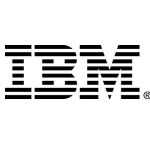Cloud
The new dream team: BPM and blockchain
17/11/2017 | Written by: Think Blog Editor
Categorized: Cloud
Share this post:
Blockchain technology is the new hotshot player, wowing the crowds with new innovations. Business process management (BPM) is a powerful performer on the scene for a decade, consistently delivering. What happens when you combine them?
With experience in both BPM and blockchain, we have compiled some advice for how these two technologies work best together.
Business process management
You can think of BPM as a digital automation framework that helps organizations improve overall efficiency and the ability to execute consistently. It streamlines business processes within an organization where participants normally trust each other. Innovations in areas such as case management, event processing, business rules, and integration mechanisms help organizations address strategic goals by implementing new and continuously improving existing business processes.
The challenge: trust and transparency
Business processes rely on data from information systems outside their control, even data from other enterprises. This data must move between organizations, or even between enterprises, which is not only complex and expensive but often results in stale and inconsistent data. Lack of transparency and trust is the consequence.
Blockchain
Blockchain is widely accepted as an answer to trust and transparency issues in business networks that span organizations for the following reasons:
- Participants in the network use a shared ledger to perform transactions on assets.
- Transactions are validated by participants through a consensus protocol.
- Smart contracts control transactions between participants, which therefore do not need to trust each other. Smart contracts ensure that contractual conditions are met, and obligations are enforced.
- Permissive blockchains ensure that all information and transactions on the blockchain are available only to network members with the right permission.
The combined solution – BPM and blockchain
In a combined solution, the shared ledger provides the interface for business processes — a process queries asset information and performs transactions directly on the ledger. Stale or inconsistent data is a thing of the past! In addition, business events on the blockchain initiate or drive business processes, ensuring that the right organizations are involved and react to events in a timely manner.
The combination of both business process management and blockchain helps you to reach the next level of integration and automation of business processes. You can significantly improve your business processes.
Want to know more on business process transformation? Read here for more info >
Automate work and accelerate business growth
Many companies need help to navigate the rapid changes that define today’s business environment. To improve their responsiveness and flexibility, they are looking for new ways of conducting business, rethinking their processes, and investing in digital transformation projects to increase the robustness of their operations. They rely on business automation technologies to cut out repetitive […]
Sustainability and the technologies enabling the transition
Creating a sustainable future demands significant technological innovation to decarbonize society, restore biodiversity and ecosystem health, foster thriving oceans for sustenance and economic growth, remove atmospheric carbon, transition to sustainable agriculture, and advance eco-friendly cities that align with our vision for a better future. Generative AI has achieved much in recent years and now surpasses […]
Data-driven asset management with IBM Maximo Application Suite and Cloud Pak for Data
IBM has enhanced its Enterprise Asset Management platform, IBM Maximo Application Suite (MAS), with IBM Cloud Pak for Data: a supporting platform which provides a framework for combining a variety of data from different areas of an organization. How does IBM Cloud Pak for Data help organizations gain additional asset management insights from available data? […]



